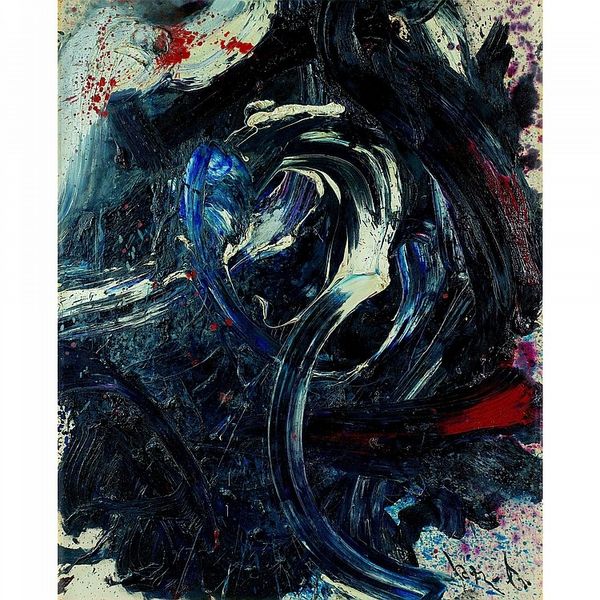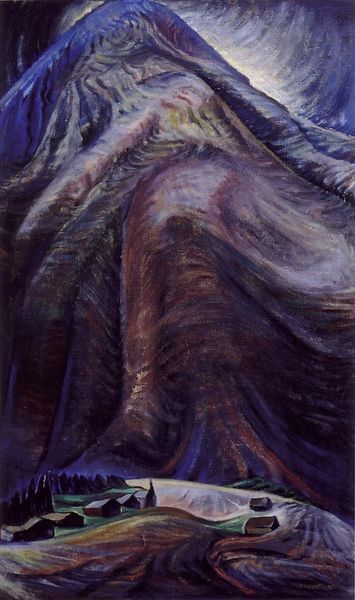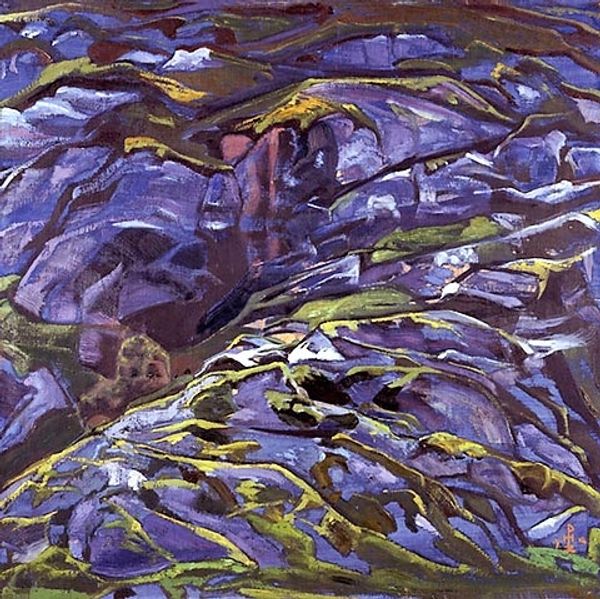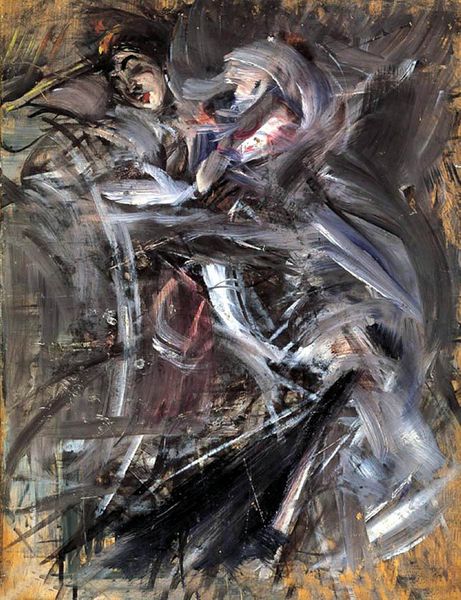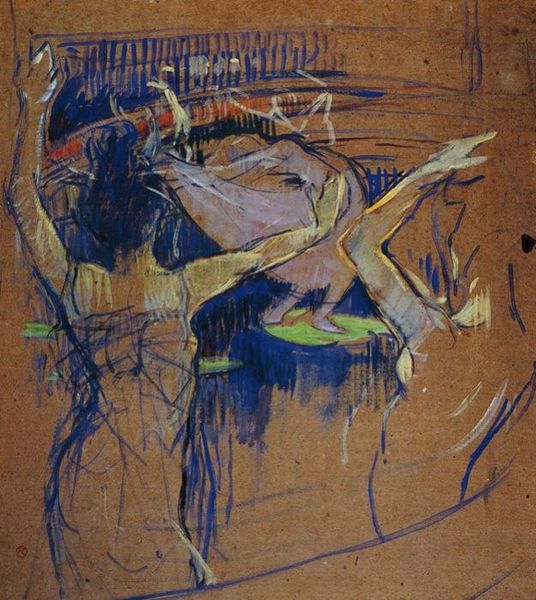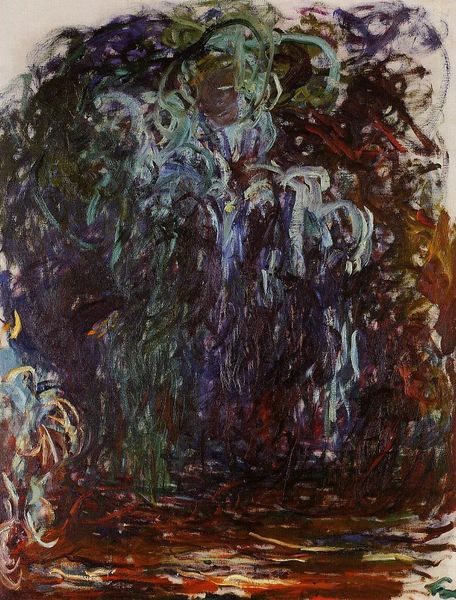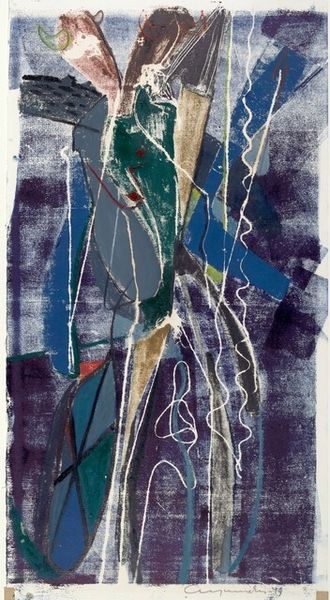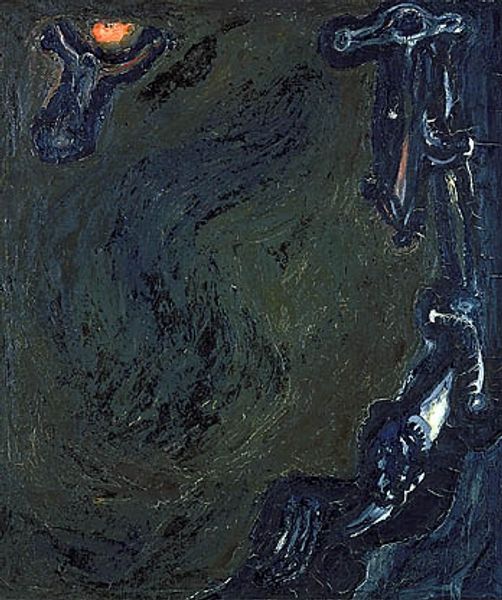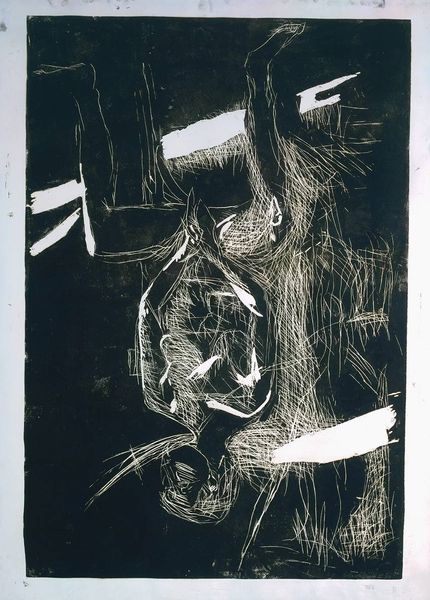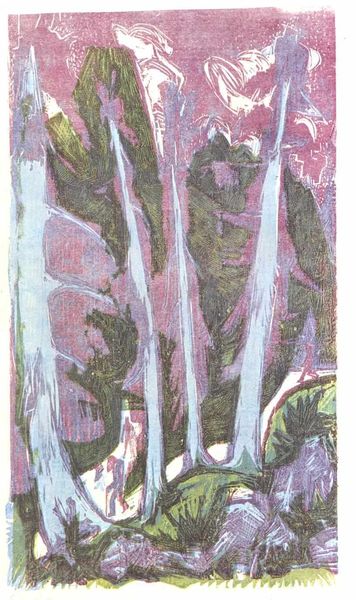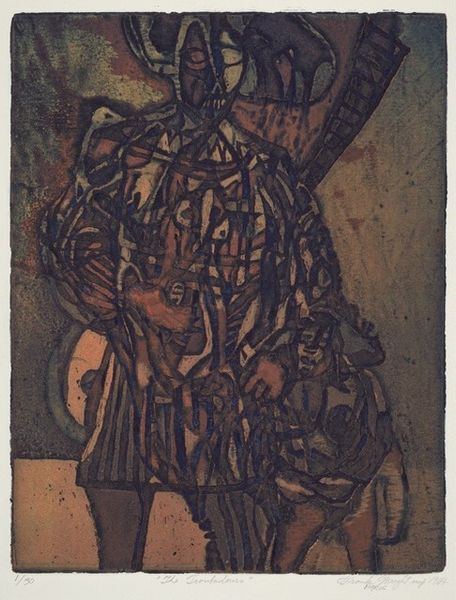
#
gutai
Copyright: Kazuo Shiraga,Fair Use
Editor: This is Kazuo Shiraga’s "Tomomori jusui (Blue Fudo Flame)", created in 1973 using acrylic paint in a very thick, almost sculptural way. The heavy, swirling blues and blacks create a feeling of intense energy, a kind of controlled chaos. What do you see in this piece, looking at it through your expertise? Curator: Immediately, the title suggests a deep connection to cultural memory. "Fudo Flame" speaks of Acala, the Buddhist deity, wreathed in flames that consume ignorance. The "Blue" signifies tranquility but, ironically, it heightens the intensity. Notice how Shiraga, deeply immersed in post-war abstract expressionism, infuses this Western form with Eastern spiritual symbols, creating a powerful psychological tension. What do these colors and textures evoke for you, considering the cultural context? Editor: It makes me think about destruction and creation, like a phoenix rising from ashes. The thick paint almost feels like it’s building something up while simultaneously tearing it apart. Curator: Precisely. The impasto becomes symbolic itself. Think about Japanese calligraphy: the gesture, the pressure, the spirit imbued into each stroke. Shiraga replaces the brush with his body, wrestling with the medium, imbuing it with a raw, visceral energy linked to ritualistic practices. Can you see the performative aspect here? The physical act of painting becomes a spiritual act? Editor: I didn’t initially, but that’s a great point! It connects it to a larger tradition. I'll remember this when viewing similar art pieces. Curator: The interplay between abstract expressionism and cultural memory gives this work a resonance that transcends its pure aesthetics. It’s a dance between the personal and the universal, a glimpse into the artist's soul filtered through the lens of centuries-old beliefs.
Comments
No comments
Be the first to comment and join the conversation on the ultimate creative platform.

